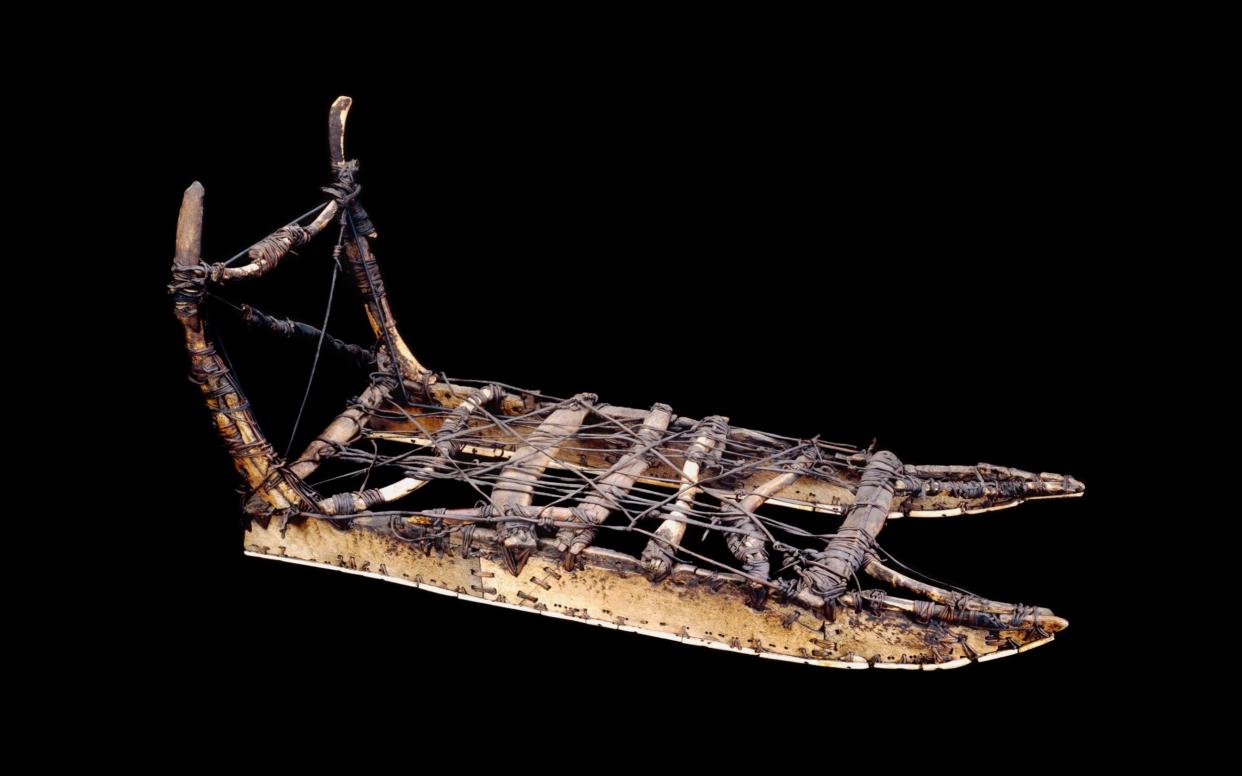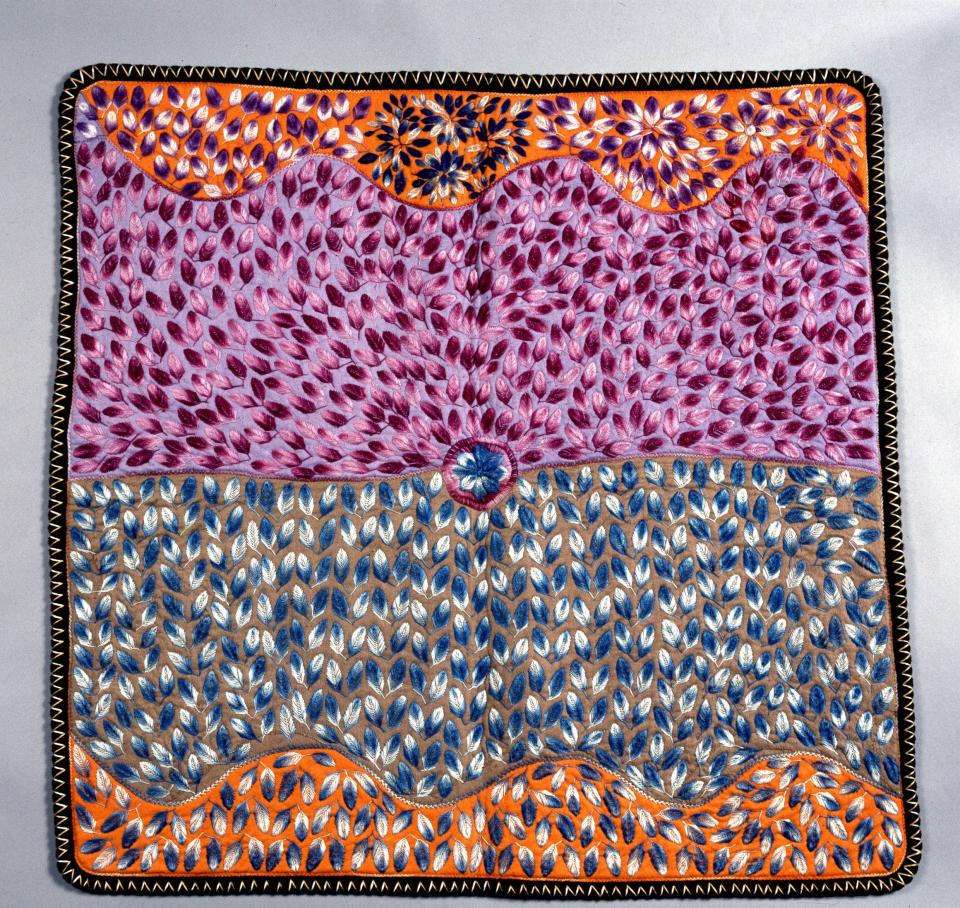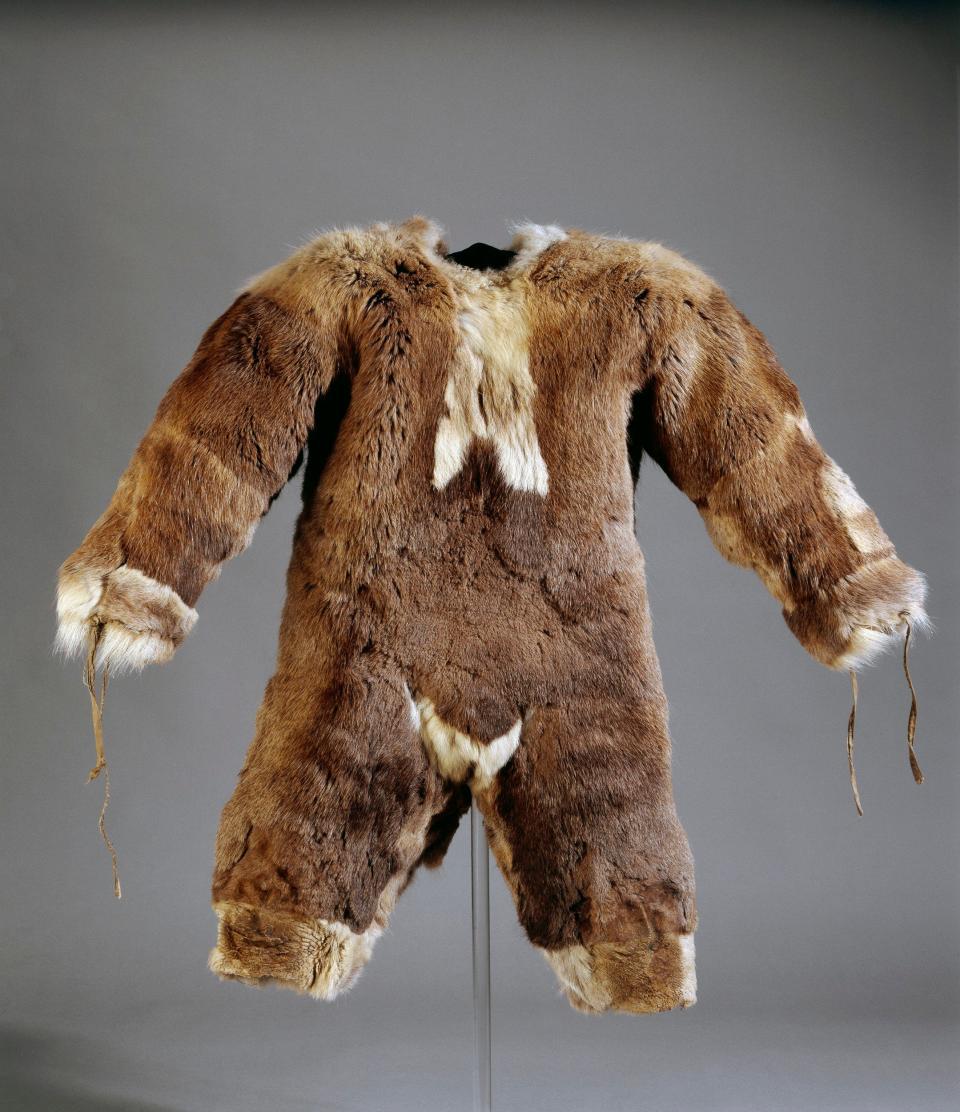Arctic: Culture and Climate, British Museum, review: an elegiac testament to human ingenuity

“Would Inspector Sands please report to platform 3?” That’s how Network Rail alert staff about emergencies without panicking the public. At the threshold of the British Museum’s latest exhibition, Arctic: Culture and Climate, I thought of the Inspector. He needs to hotfoot it to Bloomsbury. Because the show begins with a simple graphic that, though silent, strikes a note of warning as loud as any siren.
It consists of a map, oriented so that we look down on Earth from above the North Pole. Think: Santa’s-eye-view. And what does Saint Nick see? The alarmingly rapid recession of Arctic sea ice in recent decades. Seventy-five per cent of it, no less, melted by rising temperatures since 1979.
Stories about climate change are ten-a-penny. Still, the starkness of this trajectory pulls you up short. Scientists predict that the North Pole will be ice-free within 20 years. Come Christmas Eve 2040, Santa will have to swap his sleigh for a submarine. By 2100, the graphic suggests, the ice pack may be gone, with catastrophic consequences for “southerners” below the Arctic Circle.
The British Museum specialises in exhibitions about far-flung civilisations and cultures. Vikings, Scythians, Aztecs, Greeks. This time, it’s the turn of the Arctic Peoples – those indigenous communities, including the reindeer-herding Sami of Scandinavia and Greenland’s igloo-building Inuit, who have thrived against the odds for 30,000 years at the world’s icebound apex, the Circumpolar North, and currently number almost 400,000. And, though the exhibition lacks some of the heft and spectacle of the great shows of the past, it does, given the climatic context, have an urgency absent from its predecessors.
As the museum’s director, Hartwig Fischer, puts it in the catalogue’s foreword, the Arctic communities – whom we meet by proxy in the opening display, in the form of gorgeous garments painstakingly stitched by seamstresses from ethnic groups with evocative ancestral names (Nenets, Evenki, Gwich’in) – are living on the “frontlines” of emergency. Coastal erosion is increasing. Roads built on thawing permafrost are collapsing. Entire towns now require relocation.
Snow and ice can sprinkle magic on most stories: when, early on, we see footage – shot from the driver’s point of view – of hard-working dogs pulling a sled across an icescape, we become, momentarily, Edmund riding beside the White Witch. All that’s missing is Turkish Delight. Yet this isn’t a fantastical winter wonderland. We’re not in Narnia. These are real places – and they’re about to disappear. The magic of this show, then, is keen and elegiac. Everything we see feels like a relic from a lost world.

And what “relics”. If anything links the 280 or so objects in the exhibition – from a translucent seal-gut parka and sophisticated toggle-headed harpoons to a toddler’s onesie made of soft caribou-fawn fur (cute!) – it is a sense of sleek, elegant beauty derived from ingenuity and ergonomic functionality. Form follows function was a maxim for 20th-century industrial designers. These Arctic artisans could have taught them a thing or two.
Speaking of design, the exhibition’s is impressive. The Sainsbury gallery can offer such a bland, hangar-like backdrop. Here, though, it is transformed, with a long, snowdrift-like white wedge running down one side, supporting a few artfully selected objects semi-silhouetted against a cyclorama evoking changing Northern skies. (A seasonal soundscape, featuring singing, melting ice, and snowmobiles, ups the atmosphere.) A waterproof and inflatable sealskin whaling suit, once worn by courageous hunters willing to hurl themselves onto their sleeping prey in freezing waters, appears alongside a striking white “amauti” – a parka with a baby carrier built into its capacious hood. This one is stylishly decorated with bands of blue and scalloped orange.
The contributions of men and women, then, are both celebrated. Yes, charged with derring-do, that tobacco-coloured whaling suit captures the imagination, as does a nimble 19th-century seal hunter’s kayak – an Arctic innovation, incidentally, whose Inuit name has entered our language, along with “anorak”. (Similarly, “parka” comes from an Aleut word spoken in Alaska.) This is the sort of macho stuff that would have fired up, say, the German artist Joseph Beuys, who was obsessed with tribespeople’s sophisticated survival techniques. But the resourcefulness of the Arctic’s seamstresses is, arguably, even more remarkable.

Consider how skilfully they manipulate the raw materials hunted by their husbands. For instance, caribou (wild reindeer) fur is hollow, so it retains body heat – but, for a winter coat and mittens, only the hide of a reindeer killed in late autumn will do, because that’s when the fur is at its thickest. Wolverine fur, meanwhile, is perfect for trimming hoods, because it doesn’t absorb moisture, so won’t freeze against the face. A special, subtle stitching technique achieves waterproofing by only partially piercing the hide.
Even the direction of fur tips on the sole of a boot proves important, because friction prevents slipping. Following a slew of recent blockbusters (Alexander McQueen, Christian Dior), we associate exhibitions about tailoring wizardry with the V&A. But – who knew? – Arctic turns out to be a fashion show, too. The most splendid items at the BM are, hands down, the clothes. By contrast, much of the fine art on display, including several new commissions, left me, well, cold.
Be warned, though: animal-rights activists should give this a wide berth. One Yupiit woman’s tasselled parka – as glamorous as anything to be found on Fifth Avenue – is made from 100 ground squirrel hides. The Arctic way of life is predicated on the efficient seasonal slaughter of creatures great and small: bowhead whales, beluga, seals, caribou, migratory birds. Learning about the fine, patient art of seal-hunting is fascinating. (And to think, when it’s wet, we consider it a pain to pop out to Pret.) But the net result is brutal: stabbing at an unseen mammal’s face through a snow-covered breathing hole.
Of course, the Arctic Peoples – who believe that the animal chooses the hunter, not the other way around – don’t see it this way. Nor do the curators, bending over backwards to be respectful. Indeed, the tone sometimes veers into dewy-eyed sycophancy. Prone to the same foibles and human appetites as the rest of us, the Arctic Peoples cannot, surely, be this spotless, as pristine as fresh snow. Still, there is much to marvel at in this engrossing exhibition about the miraculous inventiveness of the human spirit. Go see it, before it’s too late. For the Arctic, sadly, it probably already is.
From Oct 22 until Feb 21; tickets: britishmuseum.org


